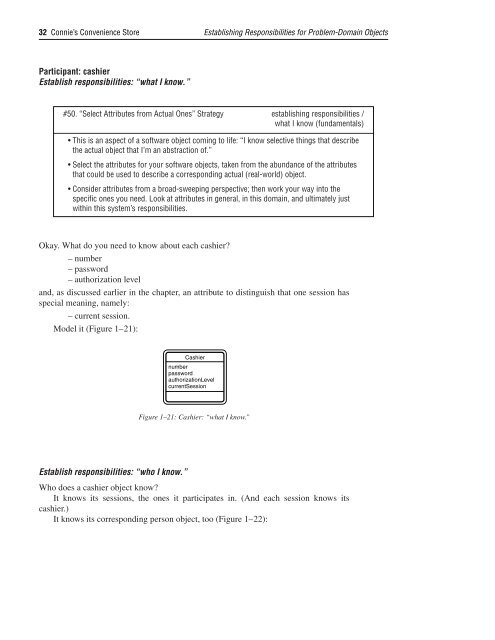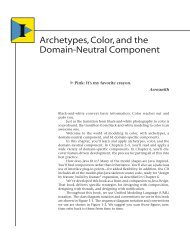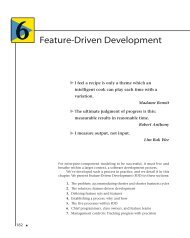Connie's Convenience Store - About Peter Coad
Connie's Convenience Store - About Peter Coad
Connie's Convenience Store - About Peter Coad
Create successful ePaper yourself
Turn your PDF publications into a flip-book with our unique Google optimized e-Paper software.
32 Connie’s <strong>Convenience</strong> <strong>Store</strong> Establishing Responsibilities for Problem-Domain Objects<br />
Participant: cashier<br />
Establish responsibilities: “what I know.”<br />
#50. “Select Attributes from Actual Ones” Strategy establishing responsibilities /<br />
what I know (fundamentals)<br />
• This is an aspect of a software object coming to life: “I know selective things that describe<br />
the actual object that I’m an abstraction of.”<br />
• Select the attributes for your software objects, taken from the abundance of the attributes<br />
that could be used to describe a corresponding actual (real-world) object.<br />
• Consider attributes from a broad-sweeping perspective; then work your way into the<br />
specific ones you need. Look at attributes in general, in this domain, and ultimately just<br />
within this system’s responsibilities.<br />
Okay. What do you need to know about each cashier?<br />
– number<br />
– password<br />
– authorization level<br />
and, as discussed earlier in the chapter, an attribute to distinguish that one session has<br />
special meaning, namely:<br />
– current session.<br />
Model it (Figure 1–21):<br />
Cashier<br />
number<br />
password<br />
authorizationLevel<br />
currentSession<br />
Figure 1–21: Cashier: “what I know.”<br />
Establish responsibilities: “who I know.”<br />
Who does a cashier object know?<br />
It knows its sessions, the ones it participates in. (And each session knows its<br />
cashier.)<br />
It knows its corresponding person object, too (Figure 1–22):




